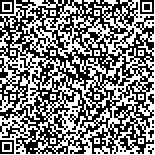|

二维码(扫一下试试看!) |
| Study on the Conductivity Percolation Threshold of Carbon Fiber / Aramid Fiber Paper-based Composites |
| Received:February 13, 2020 |
| DOI:10.11980/j.issn.0254-508X.2020.06.002 |
| Key Words:carbon fiber conductive paper-based composite materials numerical simulation percolation threshold |
| Author Name | Affiliation | Postcode | | JIANG Haiyang | State Key Lab of Pulp and Paper Engineering, South China University of Technology, Guangzhou, Guangdong Province, 510640 | 510640 | | ZENG Jingshan | State Key Lab of Pulp and Paper Engineering, South China University of Technology, Guangzhou, Guangdong Province, 510640
National Engineering Research Center of Papermaking and Pollution Control, South China University of Technology, Guangzhou, Guangdong Province ,510640 | 510640 | | WANG Yi | State Key Lab of Pulp and Paper Engineering, South China University of Technology, Guangzhou, Guangdong Province, 510640
National Engineering Research Center of Papermaking and Pollution Control, South China University of Technology, Guangzhou, Guangdong Province ,510640 | 510640 | | LIANG Yun | State Key Lab of Pulp and Paper Engineering, South China University of Technology, Guangzhou, Guangdong Province, 510640
National Engineering Research Center of Papermaking and Pollution Control, South China University of Technology, Guangzhou, Guangdong Province ,510640 | 510640 | | HU Jian | State Key Lab of Pulp and Paper Engineering, South China University of Technology, Guangzhou, Guangdong Province, 510640
National Engineering Research Center of Papermaking and Pollution Control, South China University of Technology, Guangzhou, Guangdong Province ,510640 | 510640 |
|
| Hits: 5507 |
| Download times: 4242 |
| Abstract:Percolation threshold is one of the important parameters to characterize the conductive properties of conductive composites. Carbon fiber (CF) and Aramid fiber (AF) were used to prepare conductive paper-based composite materials (CPCMs). The effects of CF contents and lengths on the percolation threshold of CPCMs were discussed. The structures of CPCMs were simulated by numerical simulation software Geodict, which could be used to predict the electrical property and the conductive percolation threshold of CPCMs. The experimental results showed that the CPCMs prepared with 3 mm CF displayed the surface and volume conductivity percolation threshold were 2.25% and 2.86% respectively. The CPCMs fabricated by different lengths of carbon fiber had different electrical conductivity. The CPCMs percolation threshold gradually decreased as CF length increased in the range of 2 to 9 mm. The thresholds of CPCMs with different lengths of carbon fiber were calculated by simulation. When the simulation area was 1mm2, the simulation value of the sample prepared with 2 mm CF was close to the experimental value. |
| View Full Text HTML View/Add Comment Download reader |
|
|
|